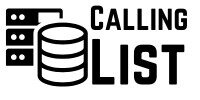In our client’s case, we first sought information on user interaction with their website and social media. We also collected feedback on their satisfaction with the products offered. Second, we focused on collecting demographic data , which gave us a better picture of their customers. Based on this, we were able to segment the contact list and move forward with designing a more personalized email marketing strategy.
Let’s recap: once you have the data and defined the variables by which you’ll differentiate them (always based on your objectives), it’s time to segment your contact lists . For this, the most effective option, in terms of time, results, and effort, is to turn to technology . The vast majority of email marketing platforms (such as Mailchimp, Brevo, and E-Goi) include data segmentation features that simplify the process. A tip: be sure to look for segmentation tools with dynamic lists , which are automatically updated every time a user generates a lead. This way, you’ll save yourself from having to update your databases every few minutes.
Create the email content
After defining their goal and who their target audience was, our team of professionals dedicated themselves to writing and designing the emails our client would send.
The content of an email depends greatly on the type of mailing campaign being developed. However, it’s essential to have a thorough understanding of the target audience : knowing what attracts them and how to convince them to take a certain action.
